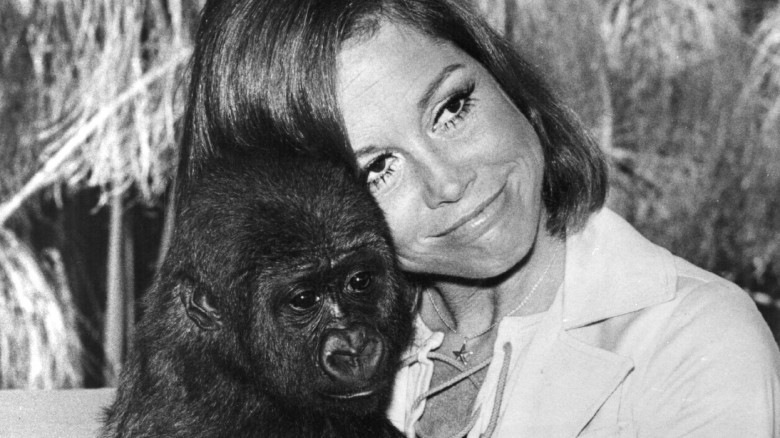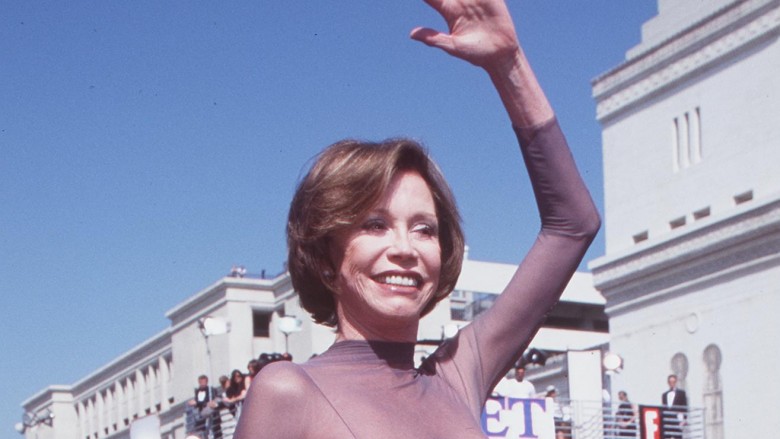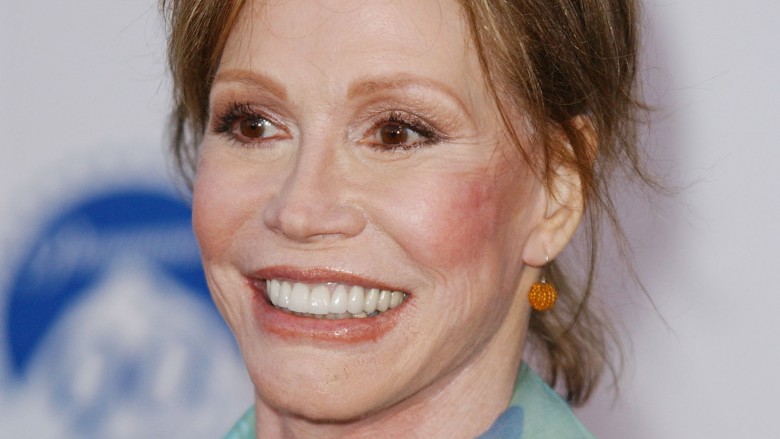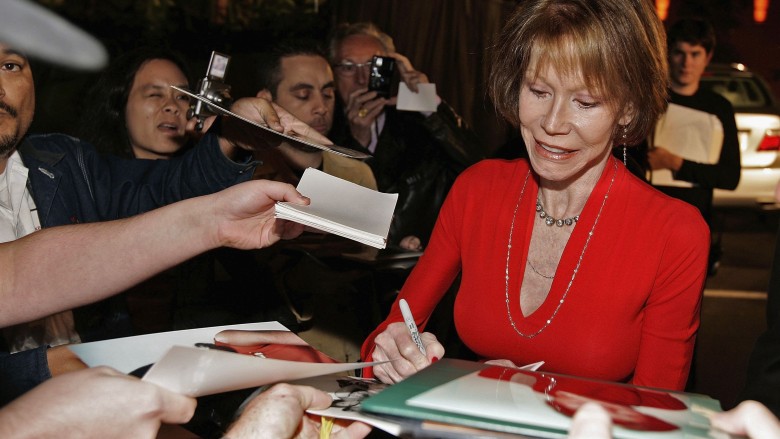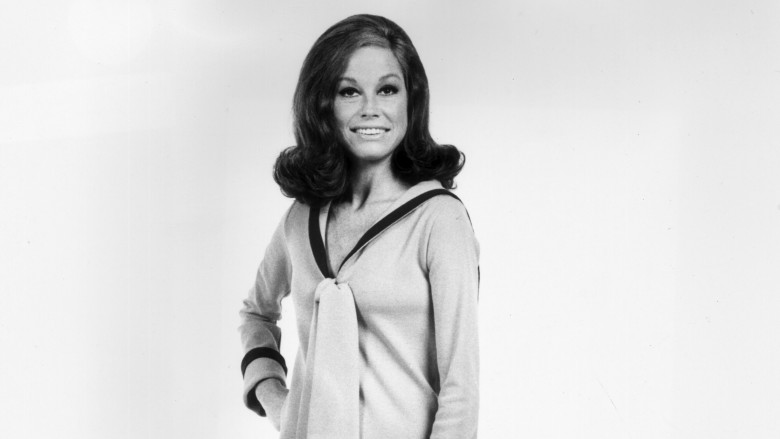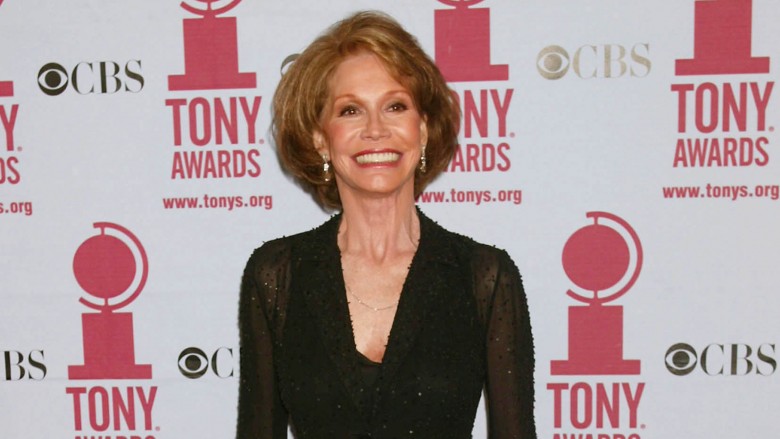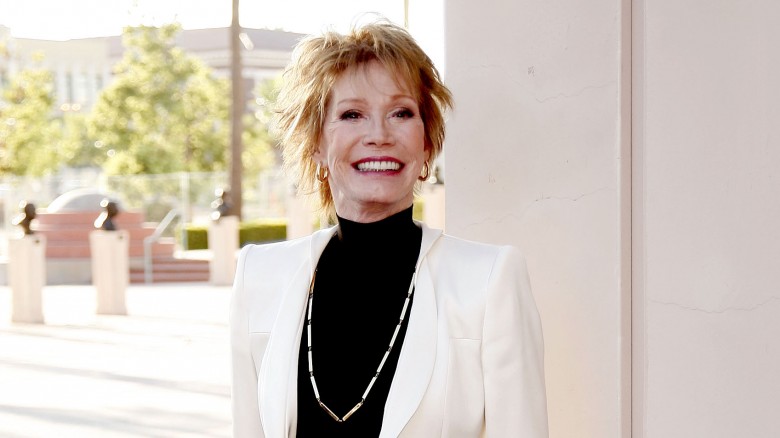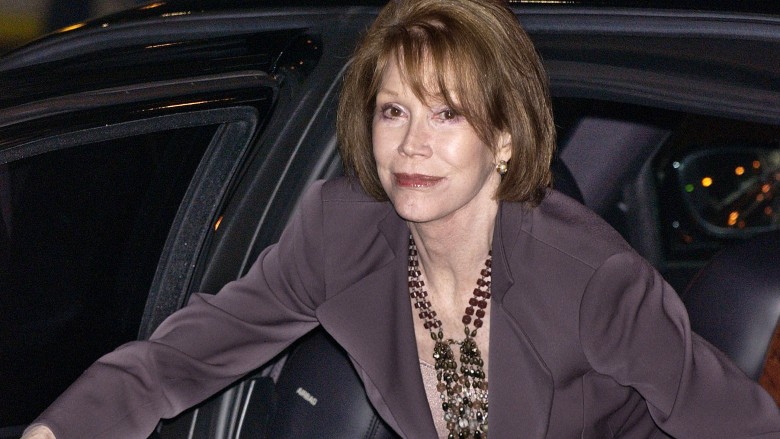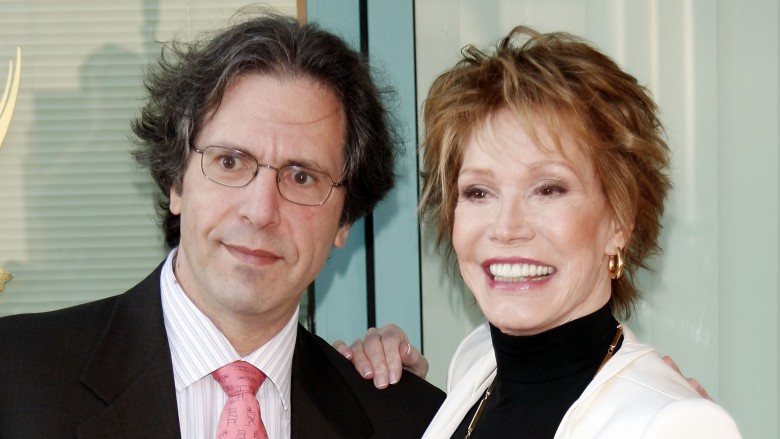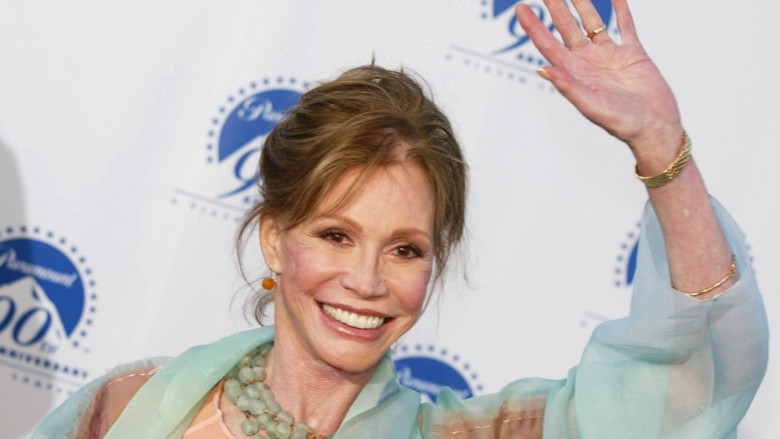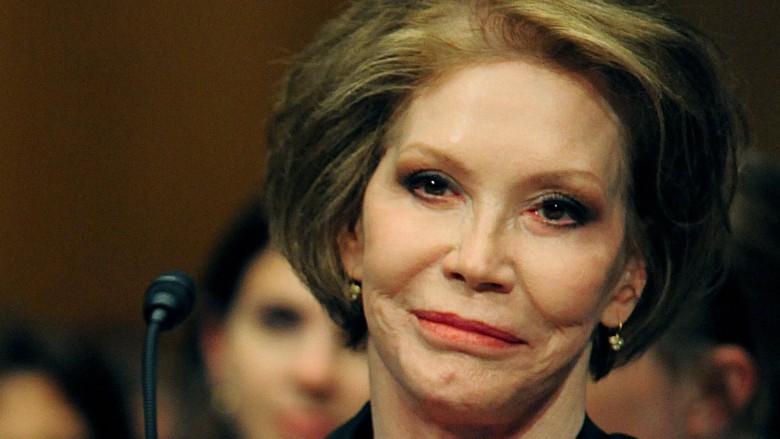The Stunning Transformation Of Mary Tyler Moore
"Mary Tyler Moore was a trailblazer. A feminist icon. And above all, funny," CBS remembered in Love Is All Around.
As a precocious girl who got her start acting in live commercials in the 1950s, Moore was a born entertainer. "I love to work. I love my work, and I can't imagine life without it," she once said. Delighting her massive television audience with her portrayal of Mary Richards on The Mary Tyler Moore Show, she pioneered a women's revolution with grace, levity, and an irresistible smile. And, of course, brilliantly-crafted comedic timing.
Winner of seven Emmy Awards and three Golden Globes, author of several revealing memoirs, and a tireless advocate for diabetes research, she managed an extraordinary career spanning over six decades. But she didn't become the woman we know, without struggling with who she was. While she unequivocally "made it after all", she also struggled deeply with her own illnesses, as well as devastating loss in her personal life. Whatever the task at hand, her spirit, her genuine joy, and her artistic mastery proved palpably strong. In her words, "Pain nourishes courage. You can't be brave if you've only had wonderful things happen to you."
1936: She's born to an alcoholic mother and absent father
The oldest of three siblings, Moore was born in Brooklyn Heights, NY in 1936 to immigrant parents. Her working-class father was emotionally unavailable, and her mother was an alcoholic, according to an interview on Charlie Rose. "I felt at the time, that I wasn't getting the love and affection and attention that I wanted, and I can see that that's probably true," she told Rose.
"My problems with my parents were basically communications problems," Moore recalled in an interview with Rolling Stone. "There are things I could say ... that would explain everything, but in my mind and in my heart those would be indictments of my parents I don't want to make. I believe they did the best they could at the time in raising me. Sure, I think I was being a rotten kid, but there were parts of what they did in raising me that were a little rotten, too." Moore would later struggle with alcoholism, herself.
1939: She had big dreams at 3-years-old
Moore credits her insatiable need for approval from her parents, for sparking her passion. She knew she wanted to be a performer by the time she was three. "In fact my grandfather said of me, 'this child will either end up on stage, or in jail,'" she told Charlie Rose.
But her English-major parents also instilled within Moore an appreciation of language. "That's something that I have brought with me and held very dear throughout my life," she shared with Rose. When she was nine, the Moore family moved to Los Angeles, where Moore would light up the small screen. Moore admitted later, "Through the years, I've come to know [my parents] much better and like them a lot, but I was going through a stage... where I didn't like them very much."
1953: She's a teen mom
Moore, just 18 years old, would give birth to her only child, a son, Richie Meeker, during her six-year marriage to 27-year-old PR executive Richard Meeker.
In a 1979 interview with Barbara Walters, Moore looked back with some regret, "I often wish that now, the situation were such that I could have another stab at motherhood. Because I could give so much more to [a] child now, because I'm through 'looking at myself.'"
"I was eager to get out on my own, and prove myself worthy of somebody's attention," Moore recalled of her teenage years. By 1995, she had come to terms with feeling that she had never attained that goal. "I don't think I have [achieved that] yet and you know, I got to the point where I don't think it's important anymore."
1957: She gets her first break as a pair of legs
Well, legs and hands. Moore was the voice of "Sam", the silky-voiced switchboard operator for Richard Diamond, Private Detective. While it was a regularly recurring role, only her legs, or a peek of her shoulder would appear on screen. Though her face was never revealed, Moore was asked by producers to keep her identity on the show secret.
Due to popular ratings, she asked for a raise — just $10 more, per show. Before producers even heard her price, she was told, "No, we can easily do it very well with just about any actress because you've never been seen." Moore, who would go on to portray a career woman fighting for equal pay on The Mary Tyler Moore Show, was fired on the spot. But thanks to her release from her contract, she gained popularity, finally able to reveal her identity as sexy mystery woman "Sam".
1961: She scandalized viewers with capri pants
On The Dick Van Dyke Show, 23-year-old Moore played flustered homemaker Laura Petrie — shattering convention by wearing a modern capri pant instead of the usual skirt. "The censors said, 'She should be wearing a skirt, women don't wear pants,'" show creator and producer Carl Reiner said, "I said, this is a woman of today, not a woman of yesterday." It was here, that Moore would hone her comedy chops. She said, "[It was] like being in college for comedy. It was just the most creative kind of — volcanically creative atmosphere." She would go on to win a Lifetime Achievement Award in Comedy in 1987.
Commenting on the married couple at the center of the show, played by Moore and Van Dyke, producer Bill Perksy said, "'This was a great couple. They loved one another, they respected one another, and they got into all kinds of trouble." In the same TV special, CBS reported, "Mary Tyler Moore had created the kind of wife women across America could recognize. In a country about to undergo tumultuous change, they were seeing themselves."
1962: She takes another stab at wedded bliss
Just as her newfound success caused her first marriage to disintegrate, Moore, 25, met another recent divorcée on set at The Dick Van Dyke Show: TV exec Grant Tinker who was just signing on with NBC. They got hitched, and went on to launch their own production company, MTM Enterprises. But future feminist icon Moore revealed the couple's home dynamic, telling Rolling Stone, "It's chauvinistic for men to think they are the more important member of a family. But that's the kind of marriage we have. It's been that way from the beginning."
"We began to spend less time with each other. That taking-for-granted attitude ... began to happen to us. We didn't recognize it. We just began to lose interest in what the other was feeling, and what the other had to say. We had many long conversations about it, not knowing how to put it back together again. We decided the healthy thing to do might be to separate and see what happened," Moore told Barbara Walters. They separated for six weeks, later returning to their union. "It was a really good period ... to be able to walk away and come back together."
1969: She's diagnosed with diabetes
As her career was skyrocketing, 33-year-old Moore was issued a crushing blow. A Type 1 diabetes diagnosis. While she was championing women's rights on screen, she was fiercely advocating for medical advancement and research on the disease in real life. "Back then, nobody really knew what diabetes was," she said. Moore became an international chairperson for the Juvenile Diabetes Research Foundation, working intimately with the organization for decades.
As NPR reported, Moore struggled in managing her diabetes. NPR cited the devastating illness, along with her difficult childhood, as part of the storm constantly brewing underneath Moore's "famous sunniness". But while she may have been privately striving against odds, she never lost her steely determination to achieve.
1969: She tanked her film career with Elvis
Moore was attempting to carve out a career not just in TV, but in film. A notable box office bomb? Change of Habit, starring Elvis Presley. New York Magazine movie critic David Edelstein said, "She just wasn't comfortable [with film]. The Elvis movie really sank her movie career, and sank his movie career."
"I was his last leading lady," Moore joked on Larry King Live, "He played a singing surgeon, and I was an out-of-habit nun." She claimed Elvis later said he had slept with all of his leading ladies — except one. "I know who the one is," she said with a wink. Even considering her later Oscar nomination, Moore would never achieve the same level of success in film, as she would in television — and fans were about to lose their minds over her next starring TV role.
1970: The Mary Tyler Moore Show debuts as a flop
"The Mary Tyler Moore Show was a very dicey proposition at first," said Jennifer Keishin Armstrong, author or Mary and Lou and Rhoda and Ted, which tells the story behind the making of The Mary Tyler Moore Show. "Testing went very poorly with audiences, initially. They didn't get it. Why didn't she have a husband, why wasn't she looking for a man? ... It was definitely ground-breaking." In addition, Moore recalled, "So many people have said to me on a serious level how appreciative they were of that series, and what it did for them at the time. How it allowed them to stay home on a Saturday night, and be ok not having a date, because it was alright for Mary."
She rose to stardom in her role as Mary Richards, a single, career woman who worked and socialized with her friends. "It showed people that a family is not just blood-members, not just relatives — that they are the extended people with whom you work, who take you on as a kind of responsibility," Moore said of her role. But her success with the show didn't resolve everything in her life. She said, "Success doesn't give you piece of mind. Piece of mind probably comes with aging, maturing, love."
1977: She's an everywoman feminist icon
The Mary Tyler Moore Show brought flawless comedy, with a side of feminism, tackling topics like sex, birth control, body image and equal pay with a sparkling levity. "Let me get this straight," Mary's character says on the show, "The only reason he was paid more than I am, is because he was a man?" Her boss answers, "Oh sure! It has nothing to do with your work." CBS also broke trend by hiring women, at a time when there were not even women's restrooms at the studio. NPR reported, "By 1973, 25 of the show's 75 writers were women."
The Mary Tyler Moore Show won a Peabody Award in 1977 for "Excellence [in storytelling] and a sympathetic portrayal of a career woman in today's changing society." It was also Moore's debut project under MTM Productions, which she created with her husband at the time, Grant Tinker. Moore, at the helm of a smash hit that some called "TV's first truly female-dominated sitcom," had come a long way from playing the part of "legs" in her first TV gig, Richard Diamond.
1979: She's not naturally funny
In an interview with Barbara Walters, Moore answered whether her infallible humor comes naturally: "No ... I have a natural love of other people's senses of humor. I find that probably one of the most important aspects of being a human being: To be funny, to have a great sense of humor, and I love to be around it and enjoy it. I think maybe that's why I'm a good 'straight woman', in essence, I'd like to just share in the extra light that comes off that funny person."
She also copped to being upbeat, but experiencing more difficult emotions as well. "I find that the muscles involved in smiling, are easier to use than the ones involved in frowning," she told Walters, "I'm also easily prone to [being] terribly depressed."
1980: Her nice-gal image holds her back
Moore confessed to paying a price for her "niceness" both professionally, and in real life. In an interview with Barbara Walters, she said, "I think the price you pay is that you never really allow people to get very close to you. You're kind of keeping them at arm's length. You're never allowing them to see you blow up and really get furious. To see you at what you think is your worst." She also admitted that while she adores many people, she had no intimate friends. "I'm very much attached to [people], but never to the point where if I were very unhappy about something, that I would burden them with it. I would go to a shrink instead."
She confessed to Rolling Stone that her "clean-cut image" also stunted her professionally. She told the magazine, "I hope that as time goes by, and with each succeeding venture, I will dispel that image.... It's hard to beat four episodes a day of the same character, and that's what I'm up against. It's wonderful ... but as an actress, it's a real killer. Still, I think it can be done."
1980: Her alcoholism destroys her marriage
On her decades-long struggle with alcoholism, Moore recalled, "Every evening at six o'clock, I'd say, well I think I won't have the martini tonight. And about five minutes later, I'd be in there making it. And so, I decided rather than muck around any further as an amateur, I'd go to the pros, and the pros for me were The Betty Ford Center.
After several attempts at jump-starting their failing 19-year marriage, Moore and then-husband Grant Tinker finally divorced in 1981. She wrote in her memoir After All, "In case there's any doubt about the acute state of my alcoholism, and the insanity it produced, I can recall with sickening clarity that on more than one occasion I played Russian roulette with my car." She entered Betty Ford in 1984 and remained sober for the rest of her life.
1981: Her art devastatingly imitated her life
In a 180-degree flip from The Mary Tyler Moore Show's Mary Richards, Moore took an Oscar-nominated turn in the drama Ordinary People, playing a grieving mother mourning the death of her son. By awful coincidence, her only son Richie accidentally shot himself in October 1980 when he was 24, just a month after the release of Ordinary People. In an interview with Charlie Rose, Moore recalled, "I came through [the filming experience] thinking that I was playing my father. And was shortly thereafter to realize that I was playing myself." She continued, "I can't imagine a pain more all-encompassing than losing a child. I didn't invest enough [in Richie], as I look back."
A previously-strained relationship with her son, due to her focus on her career, had just been on the mend prior to his death. Along with her struggles in her relationship with her son, she counts not having more children as one of her greatest regrets. "My dad has spent so much time tracing the Moore lineage ... from the 1700s ... and there's this enormous graph, and it ends with me. I'm the last one. And that's sad," she said, citing her reasoning behind writing her 1995 memoir After All.
1984: She marries a third time
As if it were straight out of a Nora Ephron screenplay, Moore met her third husband, cardiologist Robert Levine, when her mother fell ill with bronchitis, and — their regular doctor unavailable — Moore was connected to "Dr. Levine," according to People. He was 15 years younger than Moore, who was 48 when they wed, but it was a love that would endure for the rest of her life.
Having met several years earlier, they were married shortly after Moore completed a stint at Betty Ford, which Levine supported her in doing. In their 33 years of marriage, they both served on the international board of directors for the Juvenile Diabetes Research Foundation. Levine was also instrumental in supporting Moore in not only overcoming her alcoholism, but managing her diabetes. Also according to People, he was by her side when she died.
1995: She's got split personalities
There was the familiarly sunshiny Moore that audiences adored in her TV sitcoms. Then, the business-minded go-getter side of the actress. And then the wild risk-taker trait she employed, that she most enjoyed. Speaking with Charlie Rose, Moore said, "I love taking chances, I love to be scared. I never had enough time on the rollercoaster as a kid, and so I look for it now on my work. I like to be challenged. I like to not be totally familiar with areas that I'm going into, anymore, because that satisfies the creative part of me."
While Moore was constantly being approached for a slew of sweet and loveable roles, she was the one hunting down almost anything else. Comparing herself to her character Mary Richards, she said, "I'm not so different from her. We're earnest, we mean well, and we have a good sense of humor. But, I'm a little more insecure and fearful. A little paranoid sometimes." In Rolling Stone, Moore admitted, "You know what I'm working on? Learning to like myself."
2017: She leaves us smiling
She was charmingly perfect in her flaws. And when she died on January 25th, 2017, a staggering piece of comedy history took a bow with her. Oprah remembered in an interview with CBS. "She was the women's movement for me. She left a profound legacy." Rolling Stone reported, "She took the modern woman and put [her] in a bright, smiling, strong-willed package that women everywhere could emulate. Instead of marriage and family, Moore championed friendship and perseverance."
"There is nothing so rewarding as laughter when you've been responsible for it," Moore once said. "I want the audience to be able to say 'I like that lady' and 'she represents me', or 'she represents a friend of mine.'" And, empowered generations of professional women, comedy icons, and hopelessly devoted fans later — like her, we did. As The Mary Tyler Moore Show's Mary Richards once said, "I feel I represent women everywhere." And as herself, with that signature smile, "But I do like to look for the funny side."

